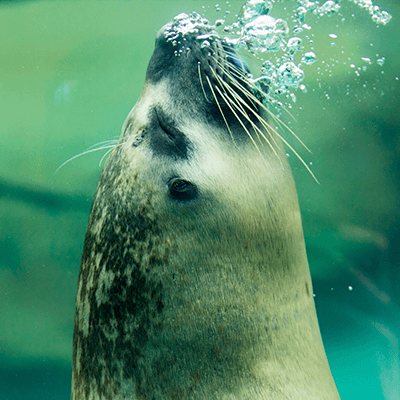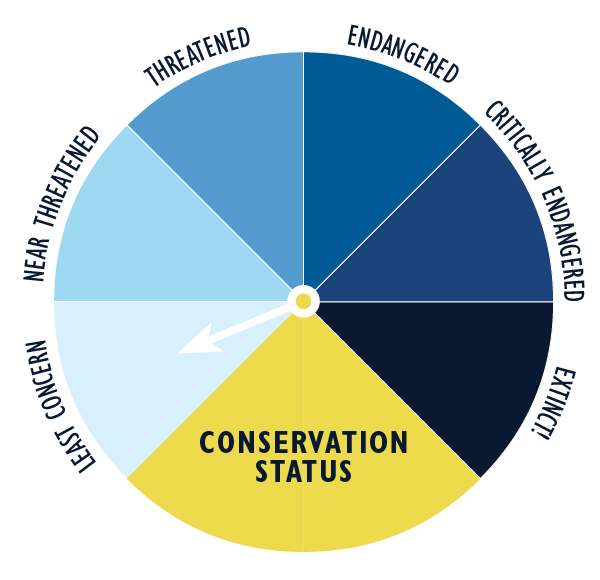
About Harbor Seal
Harbor seals swim with all four flippers, moving their hind flippers from side to side to propel themselves forward and using their fore flippers to help them steer. They can swim forward, upside down, and can move up to 12 miles per hour.
Habitat
Harbor seals are found in the cold waters of the northern Atlantic and Pacific Oceans. They inhabit shallow areas of estuaries, rivers, and places where sandbars and beaches are uncovered at low tide.
Diet
They mainly eat fish and some octopus, squid, and shellfish. Adult harbor seals can eat five to six percent of their body weight per day, or roughly 10 to 18 pounds (4.5 to 8.2 kg). Harbor seals don’t chew their food; instead, they swallow their food whole or tear it into chunks. With their back molars, they crush shells and crustaceans.
Family Life
The mating season generally occurs in late spring through fall. Prior to the pupping season, males and females exhibit pre-mating activity such as rolling, bubble-blowing, and mouthing each other’s necks. Harbor seals have a total gestation period of about nine to eleven months. Females generally give birth to one pup each year.
Conservation Status
The conservation status of the Harbor Seal is classified as least concern.
Threats
- Harbor seals face several larger predators in the water, such as sharks, killer whales, and polar bears.
- On land, the harbor seal faces the threat of coyotes who prey on the young when the mother seal is foraging.
Facts about Harbor Seal
Class:
Mammalia (mammals)Order:
Carnivora (carnivores)Family:
Phocidae (seals)Genus:
Phoca (harbor seals)Species:
Phoca vitulina (harbor seals)Life Span:
40 years (wild) / 47 years (zoo)Size:
Male: 5.2 – 6.2 feet (1.6 – 1.9 m) / female: 5.2 – 5.5 feet (1.6 – 1.7 m)Weight:
Male: 176 – 374 lbs (79.8 – 169.6 kg) / female: 132 – 319 pounds (59.9 – 144.7 kg)
Fun Facts
- A harbor seal’s flippers are short and webbed. Each fore flipper has five digits and is covered with hair. It also has noticeable claws for scratching, grooming, and defense.
- Harbor seals molt (shed their hair) each year after the breeding season.
- Harbor seals have a well-developed sense of hearing, especially in the water.
- Research shows that underwater, harbor seals respond to sounds from 1 to 180 kilohertz (kHz) with a peak sensitivity of 32 kHz. In the air, hearing ability is greatly reduced; harbor seals respond to sounds from 1 to 22.5 kHz, with a peak sensitivity of 12 kHz (the average hearing range for humans is 0.02 to 20 kHz).